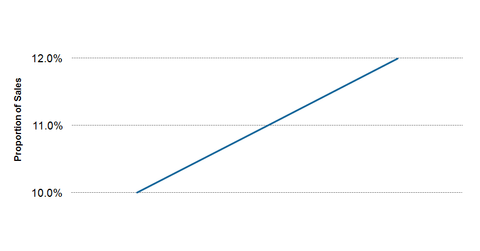Why Sephora Was Key to JCPenney’s Same-Store Sales Growth in 2014
Sephora stores inside the JCPenney stores offer beauty products from over 200 beauty brands.
July 7 2015, Published 8:39 a.m. ET

Sephora stores
At the 15th Oppenheimer Consumer Conference held in June, JCPenney’s (JCP) CEO designee, Marvin Ellison, emphasized the importance of Sephora store-within-stores to the company’s growth. Sephora stores inside the JCPenney stores offer beauty products from over 200 beauty brands. Ellison stated that the company sees the potential of growing Sephora boutiques beyond metropolitan areas. Sephora is owned by the luxury group LVMH Moet Hennessy Louis Vuitton SE (LVMUY)(MC.PA).
Growing presence of Sephora
The proportion of JCPenney’s net sales from women’s accessories, including Sephora stores, increased to 12.0% in fiscal 2014 ending January 31, 2015, from 11.0% in fiscal 2013 and 10.0% in fiscal 2012. The Sephora boutiques within the JCPenney stores delivered a good performance in the first quarter of fiscal 2015. JCPenney opened 23 Sephora stores and expanded six more in 1Q15. As of the end of 1Q15, there were 515 Sephora store-in-stores within JCPenney locations.
The Sephora stores within JCPenney are helping to increase store traffic and offer cross-selling opportunities. The company feels that the Sephora stores provide it with a differentiation compared to other mid-tier department stores. The company has now launched its own Sephora e-commerce business on the JCPenney online website.
Peers focus on beauty business
In March 2015, Macy’s (M) expanded its beauty business by acquiring Bluemercury, a luxury beauty products and spa services retailer, for $210 million. Bluemercury has 62 specialty stores in 18 states, and Macy’s is planning to further expand this business. Kohl’s (KSS) has been renovating its beauty departments and expects to have new beauty departments in ~900 stores by the end of 2015. The cosmetics business is quite vital for Nordstrom (JWN) also, and it accounted for 11.0% of the upscale department store’s fiscal 2014 net sales.
Department stores account for over 5.9% of the portfolio holdings of the SPDR S&P Retail ETF (XRT).
